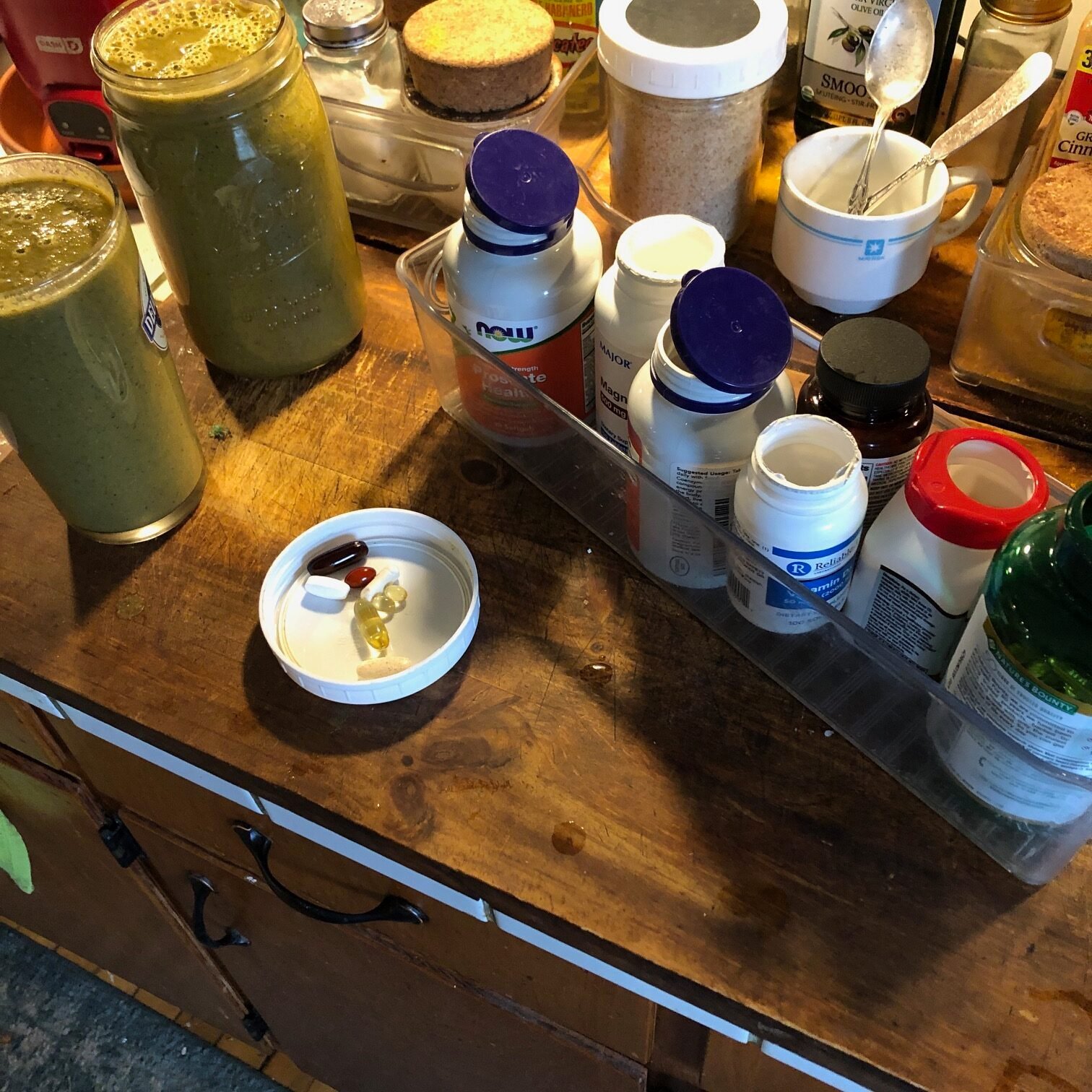About
GnarlyTree and My Journey
Living, Learning & Managing Life with Dysautonomia
Hello and welcome to GnarlyTree. My name is Jason Pogo, and this website is my safe space to share, educate, and connect with others who are navigating life with POTS (Postural Orthostatic Tachycardia Syndrome), dysautonomia, and the complex web of conditions that come along with them. If you’re reading this, you might be looking for answers, connection, or hope — and I hope you find all three here.
This is the story of my journey — one that’s been marked by unexpected health challenges, immense learning, and ultimately, resilience. My goal is to share the tools, research, and real-life experiences that have helped me survive — and sometimes even thrive — while living with a complex and often misunderstood condition.
How It All Began: From EDS to a Life-Altering Stroke
My journey began with Ehlers-Danlos Syndrome (EDS) — a genetic connective tissue disorder that causes joint hypermobility, skin fragility, and a wide range of systemic issues. For years, I experienced strange symptoms that didn’t quite make sense together — fatigue, nerve discomfort, odd balance issues. Then, everything changed in 2016, when I suffered a pontine stroke.
MRI scans revealed microlesions in the pons — the lower part of the brainstem responsible for controlling motor coordination, autonomic functions like breathing and heart rate, and even sensory integration. Pons strokes are often devastating. Survivors frequently face severe impairments like loss of speech, movement, or even the ability to breathe independently. I was fortunate — my lesions were considered small, more like micro-fractures — but even so, the damage was vast. The effects were neurological, physical, and deeply life-altering.
That stroke was a turning point. It triggered a cascade of complications that led to my diagnosis of POTS, PPPD, and a long list of other neurological and autonomic symptoms that affect me to this day.
The Diagnosis: When Everything Changed
After the stroke, I was diagnosed with severe Secondary POTS, a form of dysautonomia in which the body cannot properly regulate heart rate, blood pressure, and circulation — especially when moving from lying down to standing up.
With POTS, my symptoms include:
Tachycardia (a rapid heart rate with positional changes)
Dizziness and near-syncope
Shortness of breath
Debilitating fatigue
Brain fog and poor concentration
Nausea & lightheadedness
Blood pressure instability —leading to heat or cold intolerance
These symptoms fluctuate from day to day, but they are always present to some degree. Some days I can move around my house with slow independence, and other days I can’t do much more than lie still and breathe through the storm.
A Complex Web of Chronic Illness
The stroke and my underlying EDS created a chain reaction of neurological and sensory challenges. I now live with a long list of coexisting conditions that are all tied to dysfunction in the brain, nervous system, and connective tissue:
PPPD (Persistent Postural-Perceptual Dizziness): a constant sense of motion or “floating,” even while lying down
Neuropathy: skin sensitivity and nerve burning, resulting in the feeling that the tops of my hands and feet are on fire
(Photophobic) Light Sensitivity: an intolerance to light that can trigger discomfort, dizziness, or visual overwhelm
- Tinnitus: a constant ringing in my ears, with the occasional sudden, jarring bursts that sound like the high-pitched ringing after a bomb blast, hitting one ear or the other without warning
Polyplopia: a rare form of neurological double vision
Pressure headaches: especially at the base of my skull
Orthostatic intolerance: being upright for too long leads to worsening symptoms
Heat intolerance: a condition where the body has difficulty regulating its temperature, leading to an exaggerated or uncomfortable response to warm environments, physical exertion, or even mild heat exposure
Cold Intolerance: While many people with POTS struggle with overheating, I also experience the opposite — difficulty warming up and an unusual sensitivity to cold. This is likely due to autonomic dysfunction disrupting my body’s internal thermostat.
Even lying flat, I often feel like I’m drifting on a boat, disconnected from the world around me. It’s a disorienting experience that never fully stops.
Living in a Body That Won’t Cooperate
When I leave home, I use a Wonder Walker Plus to navigate the world — especially in open spaces where there are no walls or furniture to help orient me. At home, I can move slowly and cautiously without it, but even that takes planning and care.
What most people take for granted — standing up, walking across a room, bending to pick up something you’ve dropped — becomes a calculated risk. I am constantly weighing how much I can handle and how long I can remain upright before symptoms force me to lie down.
I Can’t Tolerate Medications — So I Turned to Food & Supplements
One of the most frustrating parts of my condition is that my body reacts strongly — and negatively — to even the lowest doses of medications. Prescription drugs, anesthesia, and even common over-the-counter painkillers often don’t work as they should. My body simply can’t process them the way a healthy system can.
Because traditional treatments are off the table, I turned to nutrition & supplements as my main line of defense. Every morning, I make a Green Juice packed with healing, nutrient-dense ingredients. My typical blend includes:
Spinach, Kale, Beet Greens, Broccoli, and Carrot
Ginger, Turmeric, Cinnamon and a dash of Black Pepper for inflammation
Banana, Strawberry, and Apple or Kiwi for natural sugars and fiber
Soy protein, nutritional yeast, creatine
Cherry extract capsule
Flaxseed and chia for omega-3s
Supplements: magnesium, vitamin D3, fish oil, glucosamine & chondroitin, electrolytes, and others.
This juice powers my mornings, supports hydration, and gives me control over what I’m putting into my body — something that’s deeply important when your body feels out of control.
Flexible Fitness: Movement on My Terms
With POTS and autonomic dysfunction, exercise can be both a lifeline and a landmine. It’s essential to keep the blood flowing and prevent muscle atrophy, but overexertion can lead to crashes, flares, or even ER visits.
I’ve developed a flexible movement routine that changes based on how I’m feeling:
On low-energy days, I stick to gentle stretching and simple breathing exercises, often just focusing on staying upright with the help of a bamboo pole I made to support my balance.
On moderate days, I try to use my incline treadmill and do light strength training every other day.
On better days, I push myself into a full-body sweat with careful pacing.
This adaptive approach helps me maintain muscle tone and circulation without overloading my system.
The Worst Days: When I Call 911
There are still rare days when my symptoms spiral completely out of control—spinning, nausea, dizziness, and an overwhelming sense of collapse—that force me to call 911. Being rushed to the ER in a panic, fearing a stroke or cardiac event, is one of the most terrifying experiences I’ve faced. And it’s not just POTS; I also navigate TBI, PPPD, EDS, and other neurological conditions that compound the struggle.
Each time, doctors tell me my vitals are “stable enough.” But stability on paper doesn’t capture the storm raging inside my body. Still, I’ve survived each of those episodes, and that survival has taught me something vital: I can make it through, even when it feels impossible. Recovery takes anywhere from ten days to over a month, and during that time, everything remains intensified—the floating sensations, pounding headaches, nausea from any head movement, brain fog, double vision, tinnitus, and more.
Why I Started This Blog
I created the GnarlyTree blog as a place to document everything I’ve learned — not just medical research or dietary experiments, but the emotional, mental, and spiritual lessons too.
I write for myself, to make sense of my world. But I also write for you — for anyone living with POTS, dysautonomia, invisible illness, or any condition that’s made you feel lost, dismissed, or misunderstood.
Here at GnarlyTree, you’ll find:
A clean space where you can share a link with friends or family you’d like to educate about your condition.
Tips on nutrition, hydration, and electrolyte balance
Practical lifestyle advice for pacing and symptom management
Honest discussions about the importance of new daily habits like Exercise & Supplements.
A supportive voice that says, “You are not alone”
- Contact me if you’d like to Share your experiences.
My Message to You
POTS is more than just a diagnosis. It’s a full-body experience that impacts every part of life. But you’re not broken — and you’re definitely not alone.
You are strong. You are resilient. You are surviving a condition that most people can’t see or understand — and that makes you a warrior.
Whether today is a juice-and-sweat kind of day or a lie-down-and-breathe kind of day, know this: you’re doing your best. And that is enough.




